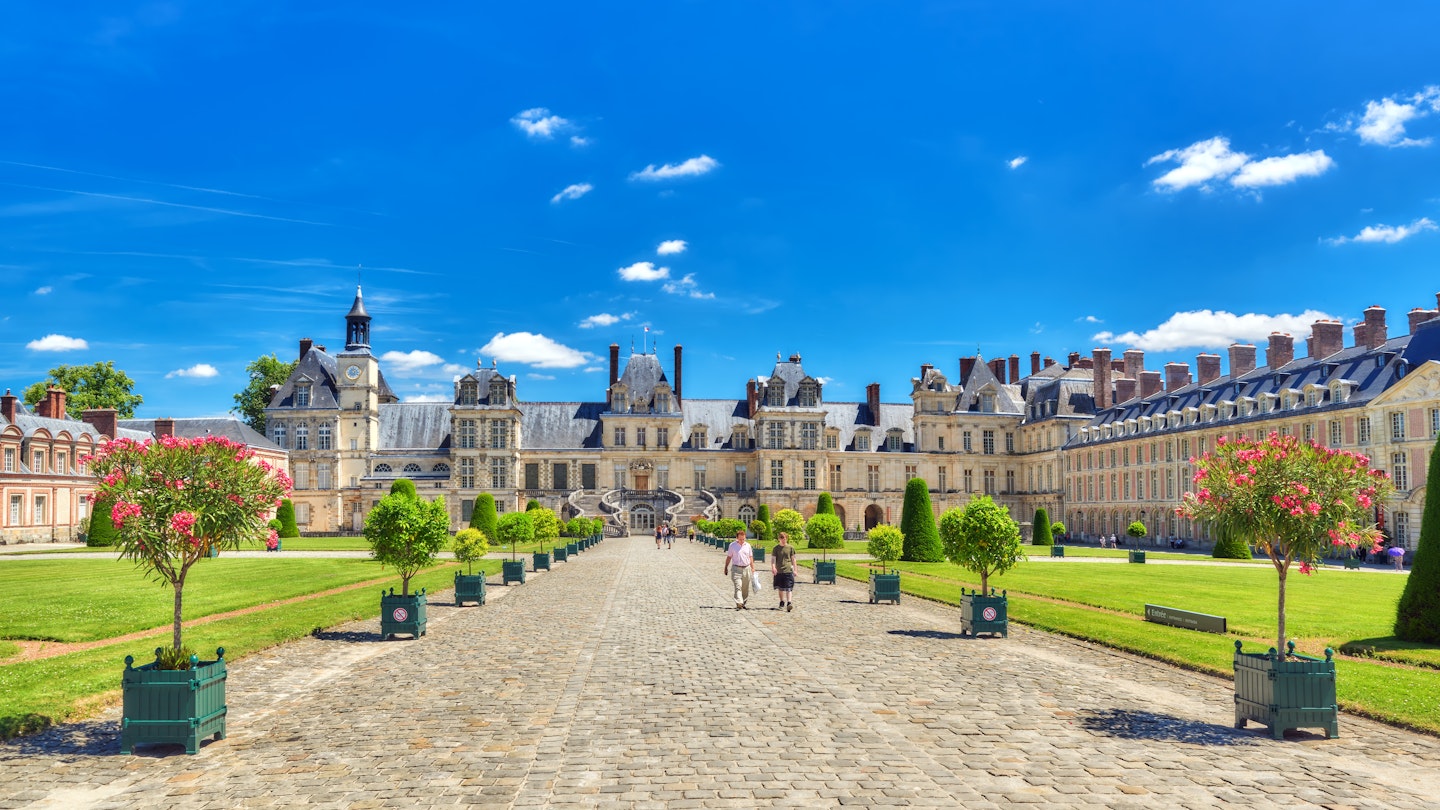Explore Fontainebleau: History, Art, and Outdoor Adventures
History and art enthusiasts will have plenty to admire in Fontainebleau, not only at the palace, which for eight centuries was home to 34 French kings and two emperors who embellished and enriched it, but also at Vaux-le-Vicomte, which predates and inspired Versailles.
Moreover, when your mind is full and you want to stretch your legs and challenge your muscles, you can indulge in numerous outdoor activities. Fontainebleau forest is world-famous for its bouldering opportunities, as well as cycling, walking, riding, canoeing, and swimming, to name but a few.
When should I go to Fontainebleau?
Any time of the year is suitable for visiting the châteaux and villages. However, if you wish to enjoy rock climbing, it’s best to go when it’s dry. For canoeing or wild-water swimming, the ideal time is from mid-May to mid-September.
Is it easy to get to and around Fontainebleau?
It’s a 35-minute, €5 train ride from Paris Gare de Lyon to Fontainebleau-Avon. A leisurely 2.9km stroll through the château’s park along the canal or through town will lead you to the palace. Alternatively, bus 1 leaves every 15 minutes from the train station, with a stop at the Bibliothèque for the château.
If you prefer a taxi, it’s advisable to arrange one ahead of time, as taxis are rarely available at the station.
While public transport connects many small towns and villages, service is infrequent, so driving or cycling is often the best option. The EuroVelo3 cycle route, known as Scandibérique, winds along the Seine and Loing through most of the highlighted towns and villages, and you can join it conveniently at the train station.
For bike rentals, **Blow Cycles** inside the train station and **Velectrik Moov** in the city center offer electric bikes, perfect for cycling along the sandy paths through the forest. Traditional pedal road bikes can also be rented at **La Petite Reine** in the city center.
Why you should visit
Fontainebleau offers a great deal, just 55km (34 miles) southeast of Paris, beyond châteaux, forests, and rocks. It’s worth spending at least two days exploring the region. If you prefer a relaxed pace, particularly in summer, four pleasant days will allow you to fully enjoy all that Fontainebleau has to offer.
What are the best things to see and do in Fontainebleau?
Visit the Château de Vaux-le-Vicomte by candlelight
The story goes that when Louis XIV’s finance minister, Nicolas Fouquet, invited the king to his château-warming party in 1661, the luxury and beauty enraged the young king. Consequently, he imprisoned Fouquet for life and commissioned the creation of Versailles, an even grander palace.
The current owners of the château represent the fifth generation of their family managing the domain, which opened to the public in 1968. Visitors can experience a variety of special events throughout the year, including candlelight visits and fireworks.
Visit Fontainebleau Palace
Founded in 1528 by Francis I as a comfortable retreat in the forest, Fontainebleau Palace was built upon the remains of a fortress dating back to 1137. As a UNESCO World Heritage Site today, visitors can explore 121 of the palace’s 1536 rooms, including a rare Napoleonic throne room and the stunning Horseshoe staircase.
Additionally, the newly renovated Imperial Theatre, built in the 1850s, offers guided tours showcasing one of the best-preserved collections of 19th-century stage sets in France.
Hike or cycle along paths in the Forest of Fontainebleau
Covering 220 sq-km (84 sq-mile) of scenic forest, the surroundings offer fantastic opportunities for walking and cycling. The area’s fine sand, considered one of the highest quality in the world, is mainly used for glassmaking.
Explore the town of Fontainebleau and its market
Fontainebleau is a vibrant town filled with boutiques, bars, and restaurants that cater to diverse tastes. The lively market is particularly popular on weekends where locals gather to select fresh ingredients.
Climb some rocks
With thousands of bouldering problems for every skill level, Fontainebleau is hugely popular among climbers worldwide. However, be aware that the busiest climbing spots can get crowded on weekends.
Admire the horses
Fontainebleau is the horse capital of France, renowned for its equestrian events held at the Grand Parquet. The Military Riding Academy offers guided tours, showcasing facilities that have been maintained for 500 years.
Enjoy the rivers
Three major rivers—the Seine, Yonne, and Loing—flow through the region, offering activities such as kayaking and water skiing. Renting a kayak on the Loing is easy, and you can enjoy various water sports along these picturesque waterways.
Bring your easel, like the artists who flocked here
The beautiful combination of forest, rivers, and charming towns has attracted countless artists over the years, making Fontainebleau a historically significant location for outdoor painting.
How much money do I need?
Many outdoor activities, including bouldering, walking, wild-water swimming, and exploring villages are free. Museum entries range from about €4 to €17. Furthermore, Fontainebleau Palace is free on the first Sunday of every month except July and August.
The town offers a plethora of accommodations and dining options to meet various budgets. For a luxury stay, hotels like **Aigle Noir** offer deluxe options, while municipal campsites cater to budget travelers alongside numerous guesthouses and middle-range hotels.




